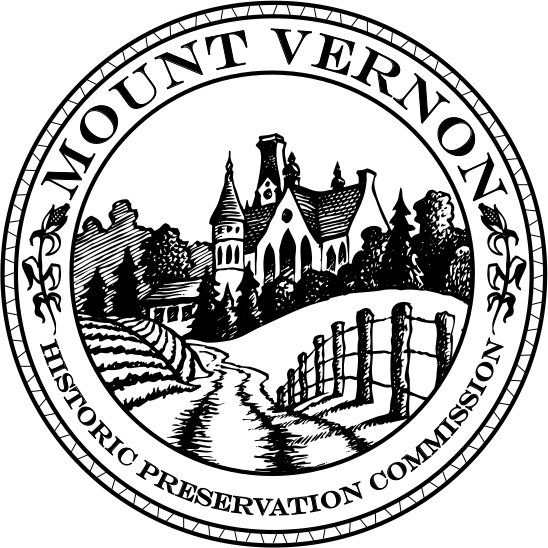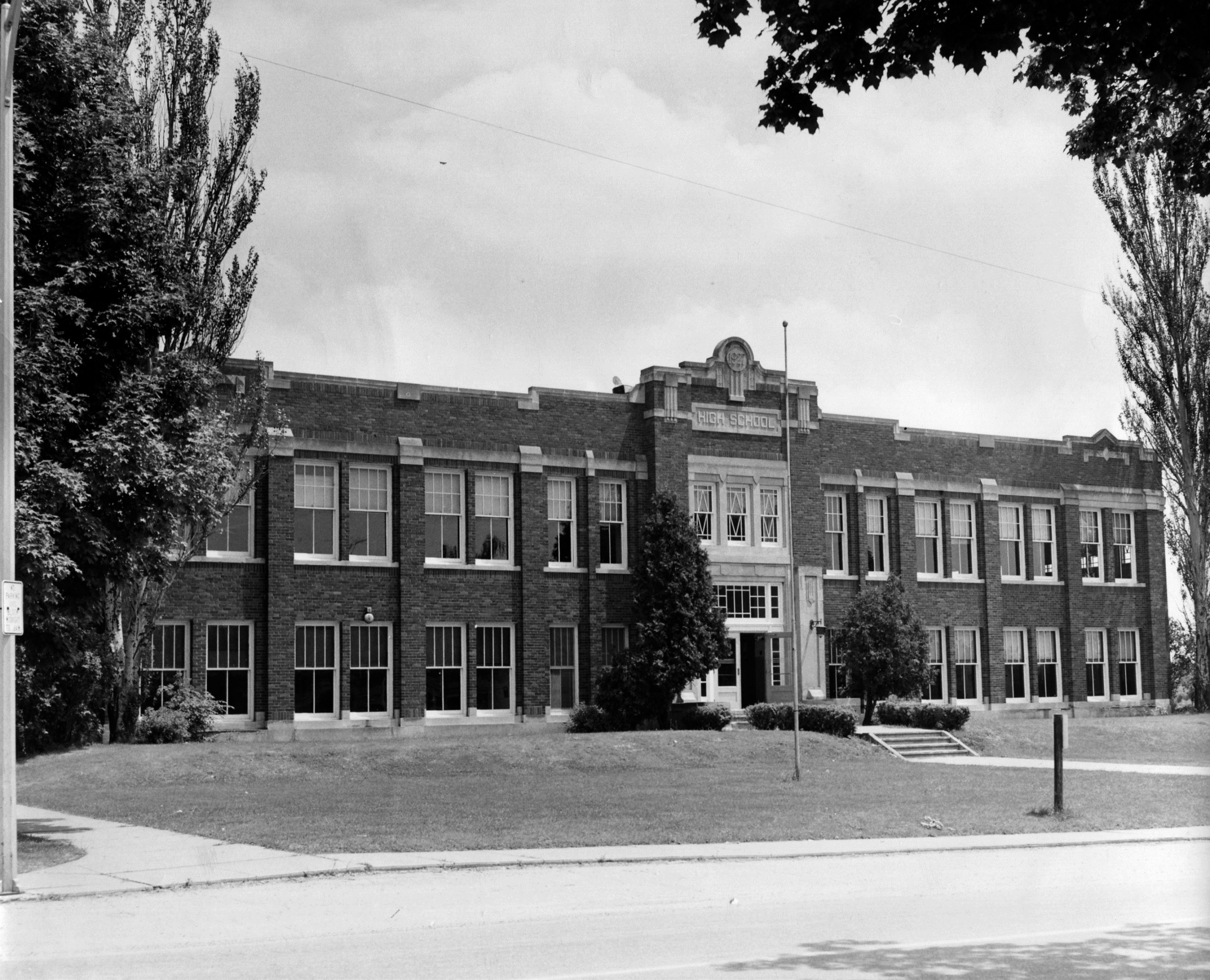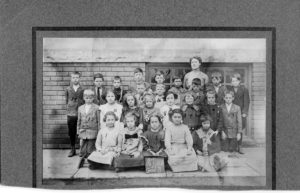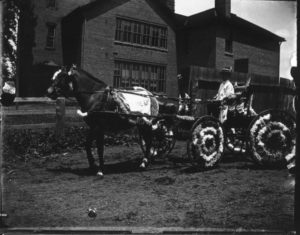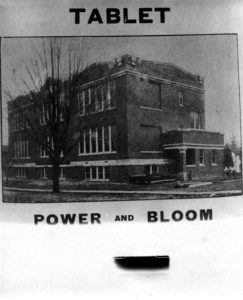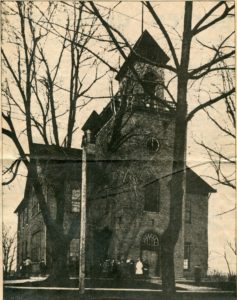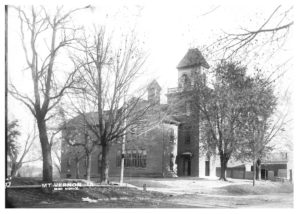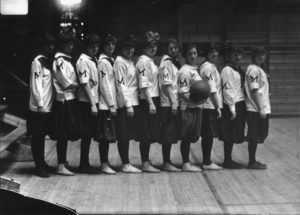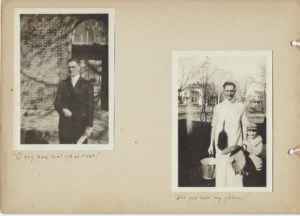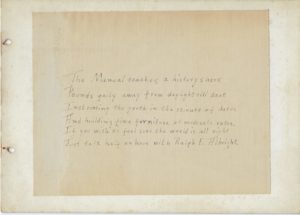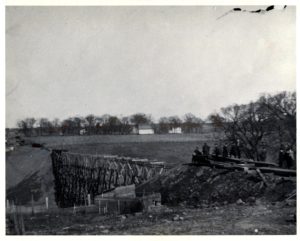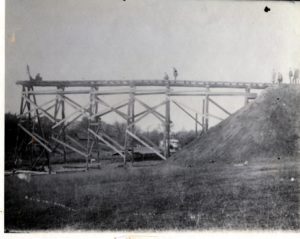Among the historic resources found in Mount Vernon is the 1927 High School Building. This building holds not only memories for citizens who may have attended school there, but also it offers a treasure trove of historic architectural features. It has been recognized by the State Historic Preservation Office as a significant building, and one which could be eligible for the National Register of Historic Places.
This was adapted for the website from an article written by Richard H. Thomas, Ph.D. member of the Mount Vernon Historic Preservation Commission
The 1927 High School Building was going to be a drastic change from the Ward School of 1911 which served as the former high school. The design, created by a Cedar Rapids architectural firm, drew heavily from the Prairie School of Architecture so popular in the 1920s. The exterior had limited decorative detailing but was filled with many windows. This combination was considered best for efficiency of building costs, good lighting, and a healthy environment for the students.
The building was also designed with space for future growth. Its interior design met the state standards set in place to provide for a quality high school curriculum. The Mount Vernon Centennial Book, ( 1947 & Reprinted) can be referenced for the history of the quest by the Mount Vernon community to provide a high quality educational system for the town.
The School In A Community Perspective
All buildings have stories to tell, and the story of free public education in Mount Vernon from the 1850s to the present sits on the corner where the historic 1927 High school now stands.
The first official school building in Mount Vernon was a small frame building built in 1852; it was soon outgrown. The Methodists also outgrew their church building, and early in the Civil War, they sold it to the school district. In 1867, the district built the “new brick school” on the site first used by the Methodist Church. Several additions and modifications of the brick school were made in the 1880s and again at the turn of the century.
The campaign for a new school began in 1891 when plans were announced for the first addition to the brick school. A newspaper editor declared that the brick school was was out of date and objected to the plans for an addition. Continued criticism of the old school coupled with several small fires added to the pressures for a whole new school building on the traditional site.
Even the construction of the Ward school in 1911 could not remove the growing sense that the old buildings no longer met the “modern needs” of education. An added pressure for a new building was the requirement by the state for districts to have a four-year high school or twelve full years of education even if only eight years were required at that time. The state soon added a requirement that high schools have a gymnasium for physical education. The issue was rather simple – either build a gymnasium or a new high school building with a gymnasium. During 1926, the people elected to build the new high school.
The Mount Vernon Historic Preservation Commission’s work includes assisting the School Board and the community to recognize the part the 1927 High School plays in the community heritage, and the importance of the schools in general to the history of public education in the city.
This school is the only school with a long-term association to the history of this community in the 20th century. The school stands as a reminder of why Mount Vernon prides itself as a good place to live and raise children.
The football field has yet another story to tell – stories about sports as part of school activities and the place of high school sports in community life of small towns. It is also the story of a project of the Federal Work Relief efforts during the Great Depression. The entire field and grandstand area were financed by the federal government to help the area’s unemployed earn a small living and to lift community spirits during very hard economic times.
The field was dug from the hillside by hand with picks and shovels. In the course of that project, it was necessary to demolish a large trestle over the gully used by the Inter Urban Street Railroad that ran from downtown Cedar Rapids to Lisbon. Thus, the field is not only an athletic facility but also an important community gathering place with a history of its own.
